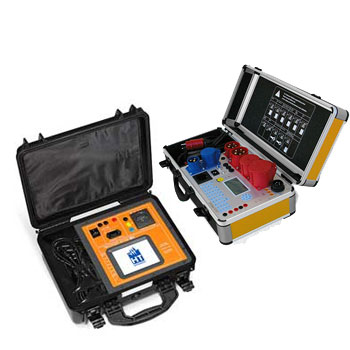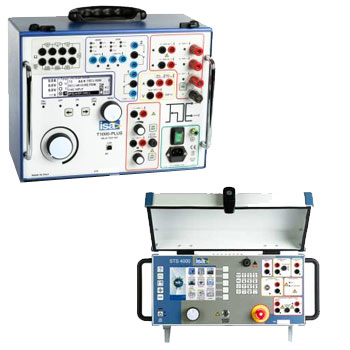
→ The Invisible Risk
Pressure sensors are among the indispensable components in the aerospace industry. They monitor cabin pressure, control engine functions, provide altitude data, and play a central role in the condition monitoring of technical systems. Their measurements are often safety-critical – and must therefore remain reliable throughout the entire period of operation.
But this is where a frequently underestimated risk emerges: many sensors undergo a gradual process of change over time – known as drift. In this case, measurement values shift slowly without any externally visible defect. The causes include mechanical, thermal, or electronic aging processes, which occur particularly often in the demanding environment of aerospace. The consequence: deviations from the actual pressure conditions, which can not only lead to malfunctions, but also have serious implications in safety-critical systems.
The solution? Long-term stable pressure sensors that deliver reliable data even under extreme conditions for many years. One example is the NG3000, a sensor specifically developed for aerospace applications that significantly reduces calibration effort while ensuring maximum measurement reliability. In this article, you’ll learn how exactly this is achieved and what advantages it brings.
→ The Problem: Sensor Drift and Aging
The aerospace industry imposes the highest standards on the precision and reliability of technical components. Pressure sensors are particularly in focus – as they deliver the data upon which safety-critical decisions are based. A central issue with many conventional sensors is what’s known as drift.
Drift refers to a gradual change in the sensor signal, even though the actual pressure remains constant. This change can amount to just a few percent or millibars – but in aerospace, even such small deviations can be critical. Drift doesn’t occur suddenly, but slowly over time as a result of various physical and electronic influences.
| Cause | Description | Typical Impact |
|---|---|---|
| Mechanical stress | Vibrations, pressure shocks, or permanent membrane loading | Material fatigue, shifted zero points, or hysteresis effects |
| Thermal stress | Frequent temperature changes or extreme environmental temperatures | Component expansion, altered electrical characteristics |
| Electronic aging | Deviations in reference voltages or internal component degradation | Long-term signal processing drift |
These effects cause sensors to become increasingly inaccurate over time – often without being noticed. In aerospace applications, this can have serious consequences:
- Inaccurate cabin pressure control: Sensors affected by drift provide false data – the control system responds incorrectly or with delay.
- Misdiagnosis in redundant systems: If one sensor’s pressure readings deviate from the expected values, it may trigger incorrect switching or warning messages.
- Safety risks in engine monitoring or altitude measurement: Deviations in pressure readings affect critical flight parameters – during takeoff, climb, or emergency regulation.
In an environment where safety and reliability have top priority, drift is not a minor issue – it’s a fundamental risk that must be addressed proactively.
→ Conventional Countermeasures and Their Limitations
To address the issue of sensor drift and aging, many aerospace companies rely on proven but often labor-intensive countermeasures. Two primary strategies are commonly used:
- Regular recalibration: Sensors are removed at fixed intervals and recalibrated using specialized measurement equipment. This is typically done as part of scheduled ground maintenance or system checks in a lab environment.
- Redundant systems with plausibility checks: In safety-critical applications, multiple sensors are operated in parallel. Their measurements are compared using software logic to detect and eliminate outliers or faulty data.
While these methods have been successful in practice, they come with significant disadvantages:
| Issue | Impact |
|---|---|
| High maintenance effort | Each recalibration requires labor, materials, and technical staff – adding to operational costs. |
| Downtime | Aircraft or test systems must be taken out of service for recalibration – reducing availability. |
| Safety risks between calibration intervals | Drift occurs gradually – errors may remain undetected until the next maintenance cycle. |
As demands for system availability, efficiency, and cost-effectiveness continue to rise, these conventional approaches are reaching their limits. What’s needed is sensor technology that addresses the root cause – by minimizing drift from the outset.
→ The Solution: Long-Term Stability with the NG3000
Drift is not an inevitable evil – it’s a technical challenge that can be permanently controlled with the right approach. The NG3000 was developed precisely for this purpose: a high-stability pressure sensor designed for extreme aerospace and aviation environments.
What makes the NG3000 so stable?
Unlike many standard solutions, the NG3000 combines several technical features specifically aimed at long-term accuracy and reliability:
- Piezoresistive silicon-based sensing elements:
At the heart of the sensor is a stable, temperature-resistant silicon chip. It exhibits minimal drift and provides an excellent signal-to-noise ratio. The piezoresistive principle ensures linear, high-resolution pressure measurements over many years. - Integrated temperature compensation:
Thermal influences are among the main causes of drift. The NG3000 features factory-calibrated temperature compensation across a wide range from −55 °C to +150 °C (optional up to +177 °C). This keeps the output signal stable and accurate, even under extreme ambient fluctuations. - Drift-minimizing electronics design:
Its fully analog signal processing, combined with a hermetically sealed housing, prevents aging effects caused by electrical or chemical influences. The sensor is immune to electromagnetic interference and environmental moisture.
Advantages for the user
Implementing the NG3000 provides not only technical benefits – it also reduces operational risks and significantly lowers life-cycle costs:
- Fewer calibration cycles:
Thanks to its long-term stability, frequent recalibrations are no longer necessary. This saves time and cost while minimizing the risk of errors during maintenance procedures. - Plannable maintenance:
The sensor’s consistent performance allows for realistic and efficient maintenance scheduling – with no surprises or unexpected warnings. - Higher system availability:
In safety-critical applications such as engine monitoring, cabin pressure control, or hydraulic systems, the overall system reliability increases due to continuously accurate pressure data.
In short: The NG3000 is more than just a sensor – it’s a long-term investment in the operational safety of modern aerospace systems.
→ Practice Example: When Time Becomes the Challenge
A mid-sized European aerospace supplier is testing a redundant pressure monitoring system for landing gear hydraulic control as part of a long-term project. The challenge: the system must operate with minimal maintenance for at least five years – during more than 3,000 takeoffs and landings per year, under continuous exposure to vibrations, temperature changes, and rapid pressure fluctuations (up to 20 bar/min).
Initially, standard industrial pressure sensors were used – with analog output signals and basic temperature compensation. After only 18 months, the first issues arose: the measured pressure values drifted by up to ±0.3% from target, triggering false alarms in the aircraft’s safety logic. This required an expensive sensor replacement and recalibration.
To solve the problem sustainably, the system was rebuilt using the NG3000 – a pressure sensor developed specifically for critical aerospace applications with enhanced long-term stability.
Technical Comparison Under Real-World Conditions
After five years in comparable operation, the following results were observed:
| Criterion | Conventional Sensor | NG3000 |
|---|---|---|
| Total drift after 5 years | ±0.55% FS | ±0.06% FS |
| Calibration interventions required | 3× during the period | 0× during the period |
| Downtime due to maintenance | 21 hours | < 2 hours (visual inspection only) |
| False alarms due to tolerance exceedance | 4 incidents | 0 incidents |
Analysis: What Makes the Difference?
The difference lies inside the sensor:
The NG3000 uses a highly precise piezoresistive silicon element directly coupled with a metallic pressure transmitter (available in stainless steel, Inconel, or titanium). The hermetically welded housing design prevents any ingress of moisture – a common cause of drift in non-hermetic sensors.
In addition, temperature compensation is not achieved solely through passive components, but actively through temperature-dependent calibration curves at the sensor level – even at extreme temperatures from −55 °C to +150 °C. As a result, measurement accuracy remains stable even under cyclic thermal stress.
Conclusion From Field Use
The switch to the NG3000 not only led to more reliable system performance but also significantly reduced operational costs. The combination of minimal drift, rugged design, and reduced calibration effort impressed both the maintenance teams and the project managers, who decided to move the system into series production.
→ In Summary: Sustainable Sensor Technology for Maximum Safety
Pressure sensors are the backbone of many safety-critical systems in aerospace. But even small measurement deviations caused by drift or aging can lead to severe consequences during operation – from malfunctions to complete system shutdowns.
This is where the NG3000 comes in: its outstanding long-term stability, combined with a high-temperature resistant design, vibration-resistant electronics, and precise temperature compensation, makes it a true problem-solver for demanding aerospace applications.
Key Benefits at a Glance:
- Measurement stability over years: Less drift, fewer recalibrations, greater confidence
- High availability: Reduced maintenance time means more flight hours and lower ground costs
- Technical safety: Reliable data in redundant systems, even under extreme conditions
Typical Applications Where the NG3000 Excels:
- Engine monitoring (fuel/oil/pressure systems)
- Cabin pressure and environmental control systems (ECS)
- Hydraulic pressure measurement in steering and landing gear systems
- Redundant monitoring in flight control and navigation systems
- Component testing and ground test stands under continuous load
Whether in civil aviation, defense, or unmanned aerial systems – the demands on sensor technology continue to rise. The NG3000 provides the technological foundation to meet them: robust, precise, and reliable over the long term.












































































































































































